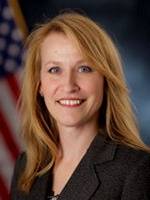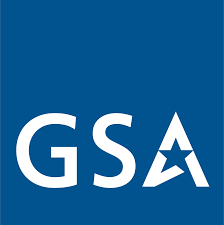

Tiffany Hixson, the assistant commissioner for GSA’s Federal Acquisition Service’s Office of Professional Services and Human Capital Categories, said her office...
The General Services Administration is taking a page out of the Defense Department playbook to improve the acquisition of services across the civilian sector.
GSA’s Federal Acquisition Service is offering its own version of a Services Acquisition Workshop (SAW). These sessions are designed to help agencies more successfully buy professional services.
Tiffany Hixson, the assistant commissioner for GSA’s Federal Acquisition Service’s Office of Professional Services and Human Capital Categories, said after experiencing a SAW in 2015, she knew it was something civilian agencies could benefit from a great deal.

After the cyber breach where hackers stole the personal information of 21.5 million current and former federal employees, GSA, DoD, the Office of Management and Budget and Office of Personnel Management formed a SAW to create the blanket purchase agreement for identity protection services.
“We were able to go from concepts and terms of those requirements through contract award based on really those getting those requirements well-defined in a performance based way in about three-and-a-half months. That was for a $800 million BPA,” said Hixson in an exclusive interview with Federal News Radio. “We have not had to go back and adjust the requirements or performance standards that were originally mapped out by the interagency working group. It has been very effective. We learned a lot of lessons through that procurement process and are taking those lessons and will be transitioning that BPA to a special item number (SIN) under the professional services schedule. Even with the requirements under the SIN, we have gone back and validated those requirements and they really still mirror what the original interagency working group came up with. So I think that is a real testament to the efficacy of the process.”
Now GSA is partnering with the Defense Acquisition University (DAU), the Federal Acquisition Institute (FAI) and the Office of Federal Procurement Policy (OFPP) to expand access to SAWs and training for federal agencies to run these workshops.
GSA, DAU and OFPP held one of the first training events June 29 with about 60 federal participants on how to conduct a workshop specifically to meet the Trump administration’s reorganization and restructuring effort specifically around the workforce. The goal was to help agencies move toward having a ready acquisition package by getting through the requirements development process.
“DAU has been, based on what I know about it, overwhelmed. There is a huge interest in using this facilitated process,” Hixson said. “We also will be testing out some train-the-trainer work for agency transformation requirements that are related to human capital planning.”
Hixson said the workshop also will focus on how agencies can use the Human Capital and Training Solutions (HCaTS) multiple award contract to meet those transformation needs.
Additionally, GSA will add to the Acquisition Gateway’s professional services hallways details about how a SAW works and where agencies can find more information about how to run one through webinars and other best practices, or how they can buy the service from DAU.
“OFPP has asked GSA to take a look at how we can support civilian agencies in using this concept to include likely partnering with the FAI to start to develop some train-the-trainer webinars and that kind of thing,” she said. “In addition, OFPP asked GSA how we can augment really the services that DAU supports with a focus on civilian agencies. We are actually conducting SAWs for agencies have instant requirements that require this kind of facilitated workshop.”
OMB set a June 30 deadline for agencies to submit the first drafts of their reorganization and restructuring plans. Once the administration approves those initial strategies, agencies will need to flesh out those concepts and GSA expects them to look for vendor help through HCaTS.
“I think OFPP has some funding set-aside to do some instant requirements that agencies may have in support of their transformation plans. So some of this may be centrally funded,” Hixson said. “If folks are using HCaTS and are asking for assisted acquisition services, it will just be included in the process we use to process the transition for them. If there are requirements outside of that, we have a big bow wave of work that is needed, we will likely partner with DAU and work through how we will support them from a train-the-trainer perspective to meet those needs.”
Hixson said GSA and FAI are following the DoD model for conducting a SAW pretty closely.
DoD developed its approach in 2012 for all services acquisitions worth more than $1 billion.
“DoD has done a great job in really thinking through how to get through a facilitated workshop to end up with a performance-based requirement,” Hixson said. “It’s really taking that best practice and sharing it across government, and then figuring out if we have gaps in terms of being able to support agencies in doing these SAWs. That will be the real business question for us to answer over the next six months.”
When conducting a SAW, Hixson said agencies should bring together all stakeholders ranging from the mission or business owners to the acquisition, technology, finance and human capital experts as well as the lawyers and any market research available about the service the agency is buying.
She said SAW’s work best when it’s a team based approach where all stakeholders have input into the final product.
“From my experience, and based on the experience from DoD, it’s pretty self- evident once you get through who is participating and how quickly you are able to get through the requirements process, most acquisition teams will be ‘yes, yes, yes, let’s do that,’” Hixson said.
Copyright © 2025 Federal News Network. All rights reserved. This website is not intended for users located within the European Economic Area.
Jason Miller is executive editor of Federal News Network and directs news coverage on the people, policy and programs of the federal government.
Follow @jmillerWFED


